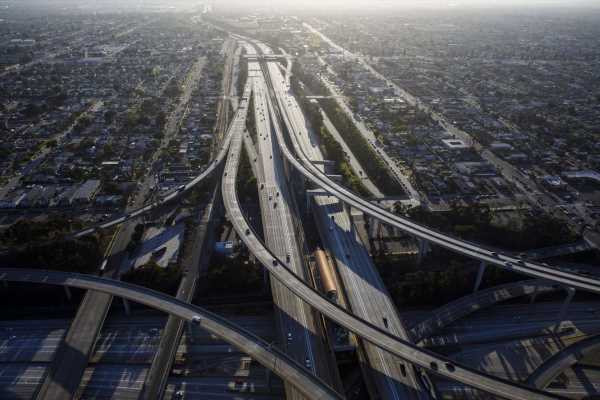Working from home and the massive reduction in travel due to Covid-19 led to plummeting pollution across America last year, according to a new report.
Rankings on the climate impact of transportation in the country’s 100 largest metro areas by mobile-analytics company Streetlight Data assessed carbon friendliness based on factors including: total vehicle miles traveled (VMT); how much people are biking and walking; transit usage; population density; and circuity, which measures how directly people can drive to destinations.
50,820 Million metric tons of greenhouse emissions, most recent annual data
Bishkek, KyrgyzstanMost polluted air today, in sensor range
$69.9B Renewable power investment worldwide in Q2 2020 0 6 5 4 3 2 0 3 2 1 0 9 0 8 7 6 5 4 .0 9 8 7 6 5 0 8 7 6 5 4 0 3 2 1 0 9 0 3 2 1 0 9 0 2 1 0 9 8 0 7 6 5 4 3 Parts per million CO2 in the atmosphere
The U.S. Transportation Climate Impact Index released today was compiled by analyzing all modes of travel from a variety of sources, including smartphones and car-data sensors.
The New York City metro region topped the list again, reflecting its robust transit systems, relatively high housing density and the large number of workers commuting by walking or biking. Cities with generally healthy populations also ranked high with Portland, Oregon, at No. 3 and Colorado Springs, Colorado, at No. 7.
Areas with milder weather more conducive to walking and biking performed particularly well.
“We saw a clear benefit for better-weather places because of all the active transportation,” said Laura Schewel, StreetLight’s chief executive officer.
Areas most heavily dependent on car travel ranked poorly. “Nothing even comes close,” in terms of pollution, she said. But, given the increase in working from home in 2020, vehicle miles traveled dropped to unprecedented lows.
“A lot of cities have a reputation for being ‘super green,’ but you have to look beyond at the urban core — you really have to look at the whole metropolitan statistical area,” Schewel said, noting that people are likely to drive more as they relocate to the suburbs.
Sprawling metro areas such as Atlanta, Dallas and Riverside, California, were ranked among the bottom 25% once again this year.
But as electric vehicles and mass transit become more popular, carbon emissions among commuters will be mitigated.
Source: Read Full Article
